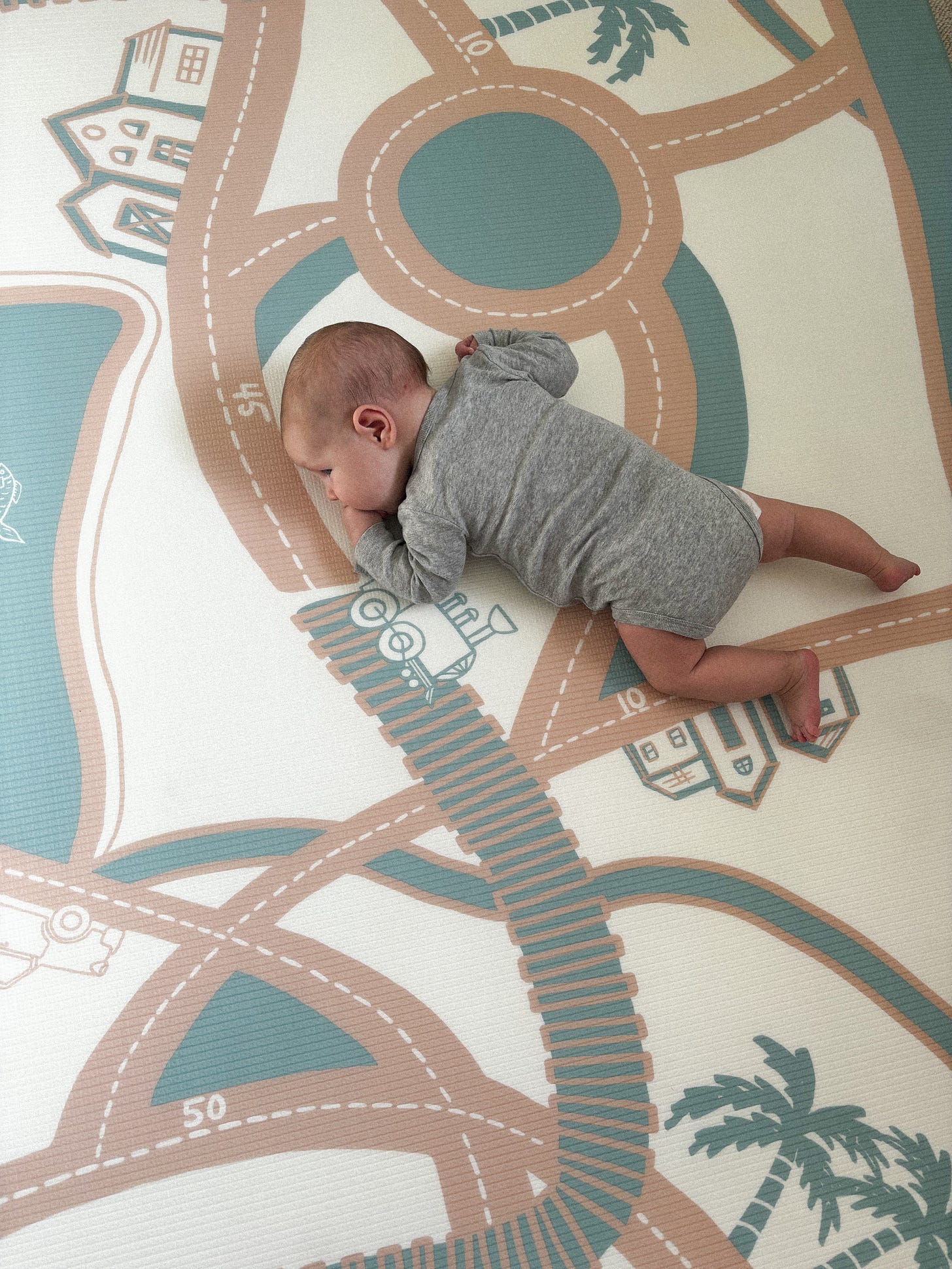Beneficial Practices That Promote Baby Development
Positive communication and repeated interactions with your baby can help facilitate favorable skills that they will need down the road. Those late night lullabies are more valuable than you think!
Did you know that by the age of three, a child’s brain has reached almost 90% of its adult size? Studies have shown that neglect, parental inconsistency and a lack of love can lead to long-term mental health problems and reduced happiness and potential. This is why the first two years are crucial for not only brain development, but social, emotional and cognitive development as well.
Here are a few ways in which you can promote healthy development in an effective (and fun) way for both you and baby:
1. Tummy Time
With our 3 month old baby, we usually do tummy time one to two times a day for about 10 to 15 minutes each (on a good day). However, I believe practicing this once a day for a few minutes at a time is good enough, as long as you are making it a priority for your babe.
It may not be the most exciting thing since newborns can’t lift their head on their own for a long period of time (prepare for many head plops), but it’s highly recommended in order to enhance gross motor skills and sensory development, diminish chances of skull deformity (plagiocephaly and brachycephaly), and encourage bonding between you and your little one.
Studies have found that tummy time greatly improves an infant’s motor development, specifically the ability to move while on their tummy (prone), on their back (supine), as well as rolling and crawling.
The man who led the study, Dr. Lyndel Hewitt, recommends parents to start small (30 seconds) and gradually increase the time the baby is on their belly. It’s also important to make sure the infant is awake and supervised at all times.
2. Eye Contact
You may have seen that reflexive smile shortly after birth, but has your baby given you a social smile yet? Usually around the end of the second month, newborns will have their first (more intentional) grin in response to their parents or caregiver. It’s the cutest thing and signals that they are learning how to communicate in other ways than crying, and what better way to encourage this than through eye contact?
Eye contact is a nonverbal form of communication and can be crucial in helping to develop language skills that are to come later. It also helps with joint attention, or the social interaction between two people.
According to a study published in Infant Behavior and Development, "early joint attention skills are a predictor of a relatively larger early vocabulary."
There’s also a 2002 experiment in which the results show that, from birth, human infants prefer to look at faces that engage them in mutual gaze and that, from an early age, healthy babies show enhanced neural processing of direct gaze. The exceptionally early sensitivity to mutual gaze demonstrated in these studies is arguably the major foundation for the later development of social skills.
3. Baby Wearing
Research has shown a correlation between baby wearing and hip health - where carrying babies in the “M” shape leads to low rates of hip dysplasia, while positioning babies with their legs tightly swaddled together leads to higher rates of hip dysplasia.
Fascinatingly, studies have also shown that baby wearing leads to enhanced visual and auditory alertness, less crying, increased calmness in baby due to the rhythmic walking and sound of the heartbeat (reminding him of the womb), increased interaction with caregiver (where they get to be a part of mom or dad’s world and see the activities that are taking place), enhanced speech development (due to the opportunity to listen in on conversations), and many more.
The correlation between baby wearing and baby development is probably the most fascinating to me since I have always been interested in learning about other cultures and their practices when it comes to raising children. I mean, the West was definitely not the first to enact this ancestral practice and we should respect the cultures in which it first began.
4. Cuddling

Oxytocin, oxytocin, oxytocin. There’s no doubt that touch has a major impact on humans - emotionally, physically, etc. Because of this, it’s no wonder that cuddling has a profound influence on a baby’s maturation.
A few examples of touch that can enhance an infant’s development include baby massages, breastfeeding, skin to skin contact and cuddling, which all result in big benefits for your little (and you).
Oxytocin, the natural chemical that is released when we receive affection, is actually found to strengthen a child’s immune system and improve their physical development. A 2020 study also found that a baby’s heart rate slowed greatly when hugged by a parent rather than held, even at only four months old.
So, the more a parent or caregiver provides an opportunity for tummy time, displays eye contact, chooses to carry, and offers lots of cuddles, the chances of improved well-being and development are higher for the baby. And who doesn’t love a good snuggle?







